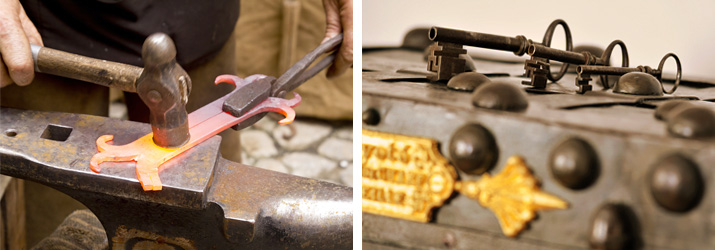Safe Manufacturing
During the first half of the 19th Century there were very few safe manufacturing facilities around. However, after 1850, the industry would change. As safes began changing in appearance (becoming more like cabinets), and demand for them as mediums of safety and storage for the increased amount of fluid cash went up, more safe manufacturing facilities opened their doors. Eventually many more new manufacturers would come into play, resulting in further technological development and advancement.
As time went on, new demands and requirements for safes would also take shape. Safes would not only serve the purpose of providing act as a place to safely deposit valuable possessions for protection against theft, but they would also protect the contents from fire hazards. That was especially necessary considering the large amounts of paper money, contracts, accounting vouchers, etc., that were in circulation at that time.
These new demands and requirements would require action – at that point safes began being manufactured with double walls. Additionally, depending on the manufacturer and time epoch, in order to further satisfy quality, the cavity between the double walls were filled with marble, burned tone, or other adequate materials.
There was a problem, however. Fire still threatened the security of bank notes and other paper-type items due to the spacing between the columns and the door. Heat and gas could penetrate that opening, thus damaging the contents. This led to the young safe industry addressing the problem by modifying the safes with special grooving and improved construction. These new modifications would create the well-known ‘clanging noise’ that is associated with the closing of safes and vaults. Having that sound would become the hallmark and criteria for having a well-constructed, high quality safe.

